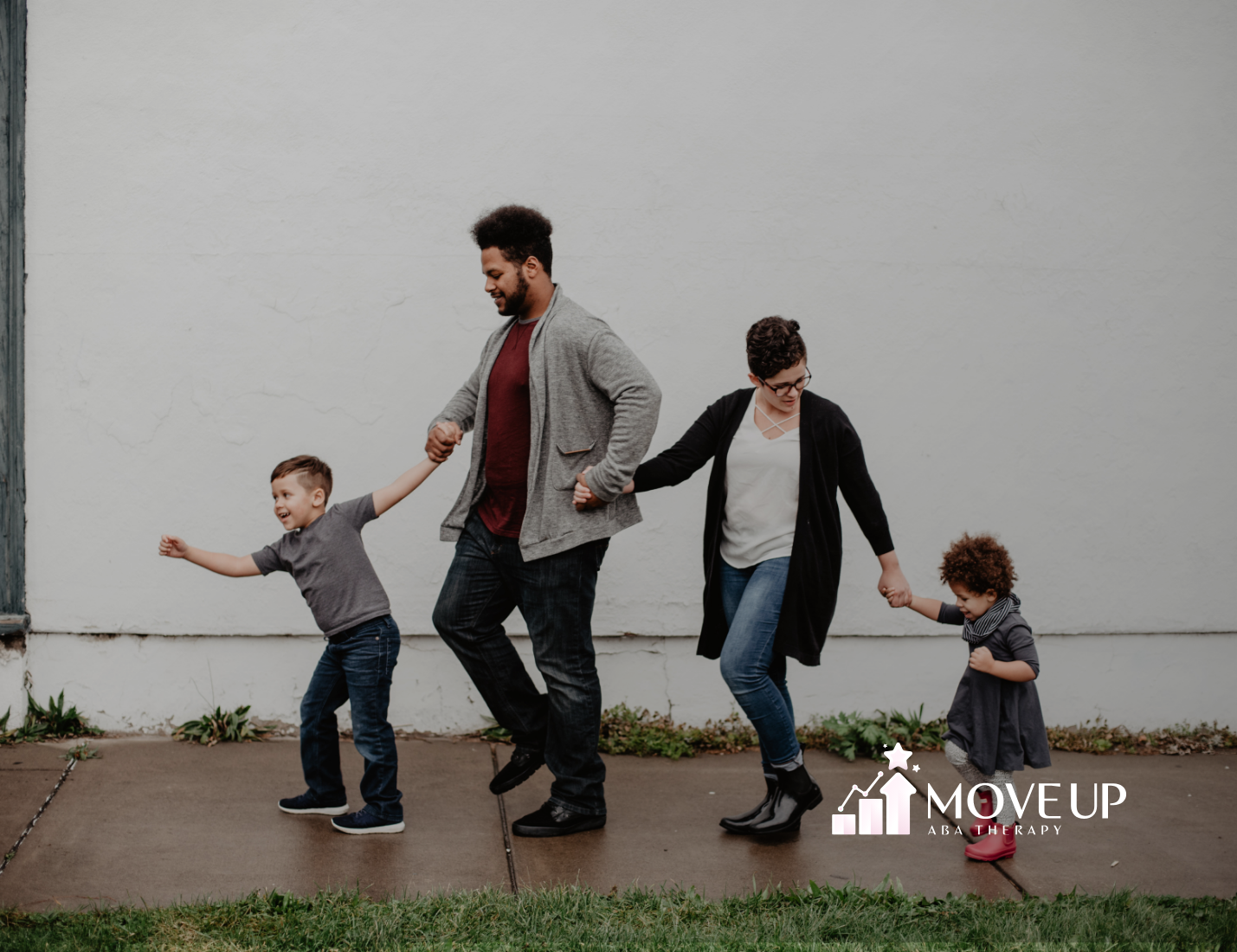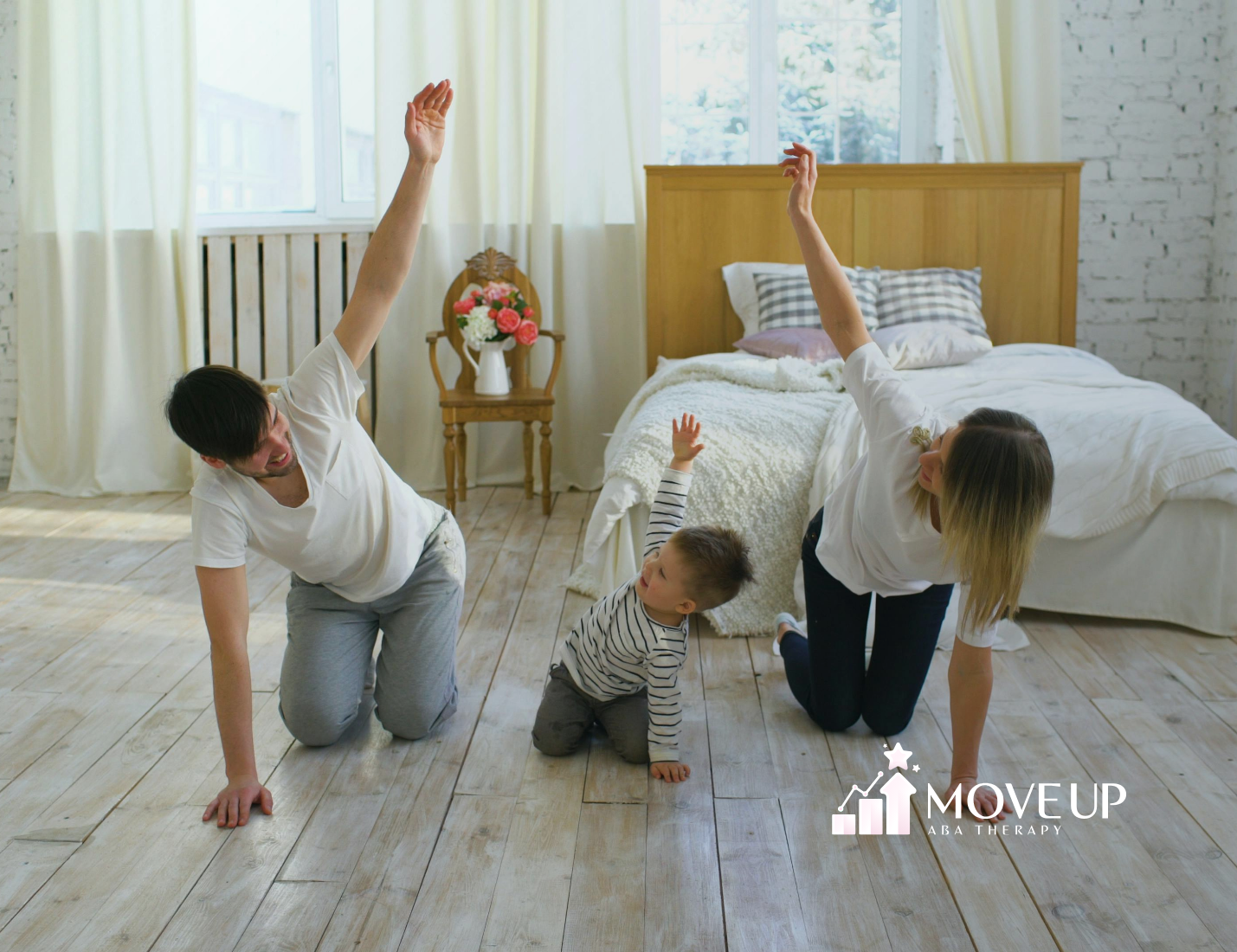Parent training is a key part of how applied behavior analysis works. In ABA therapy, these training sessions help parents learn the skills and knowledge they need. With this help, families can support their child both in therapy and at home. ABA parent training connects what children learn at the clinic with what happens at home. Parents get real ways to help bring about positive behavior change and build new skills. As more people start ABA therapy, teaching parents well helps get better and lasting results for the family. This makes behavior analysis even more helpful in the long run.
Understanding Parent Training in ABA
Parent training in ABA does more than just teach parents about therapy options. It helps them get involved in their child’s growth. ABA professionals use planned ways to show parents how to handle tough behaviors. They also help parents build social skills and learning skills in their children.
Parent training is a big part of ABA services. It centers on behavior analysis and shows families how things like what comes before and after a behavior, and how you react, can shape actions. When parents get involved in this process, new skills can be used in more places, not just during therapy. This makes it easier for kids to use what they learn in daily life.
The Purpose and Importance of Parent Training
The main goal of parent training is to help parents know and use ABA strategies in a way that works. Parents learn things like how to use rewards and step-by-step teaching. This helps the child show positive behavior both at home and in other places.
Parent training is very important because it helps with the generalization of skills. This means that children can use what they learn with their parents in new spots, like at school or with friends. Parents can keep up with making positive behavior changes in many settings, not just at home. Kids learn how to apply skills they have picked up in different situations.
Parent training also gives parents more control and lowers their stress. It helps the family work well together. These training sessions are based on evidence, so parents get proven tools for skill acquisition and managing tough behaviors. This way, families are ready to help their child grow and do better in daily life.
Key Differences Between Parent Training and Parent Education
Parent training and parent education are both important parts of ABA services, but they are not the same. Parent education is mainly about giving parents facts about diagnoses, how things are checked, and different treatment choices. It does not teach parents hands-on skills.
On the other hand, parent training is about teaching parents ABA principles and showing them good ways to handle behaviors. Parents learn to use tools like looking at what happens before and after a behavior, and giving rewards in the right way. Training helps parents take part in the therapeutic process for their child. This can have a big effect on their child’s behavior.
Studies show that parent training brings bigger improvements than education on its own. Still, mixing needed parts of parent education with hands-on training can help more with family needs. This way, there can be better changes for difficult behaviors and for the way parents and children get along.
Who Delivers ABA Parent Training?
Qualified ABA professionals like Board Certified Behavior Analysts (BCBAs) and Registered Behavior Technicians (RBTs) are the ones who usually give parent training sessions. These people work to make sure that parents understand ABA methods and can use them well.
Insurance rules say BCBAs often lead the parent training sessions. This is because they know a lot about behavior analysis and working with parents. BCBAs work with RBTs, so parents learn ABA skills the same way every time. They help parents use what they learn with their children in real life through every parent training session.
Qualifications and Roles of ABA Therapists
ABA therapists have special skills that let them give strong parent training. BCBAs have master’s degrees and board certifications. They lead ABA programs and set the goals for parent training. RBTs have a high school diploma and a special RBT certificate. They show parents how to use parts of the ABA principles and help during the sessions.
| Role | Qualifications | Responsibilities |
|---|---|---|
| Behavior Analyst (BCBA) | Master’s degree, board certification | Create parent training goals. Supervise sessions. |
| Registered Behavior Technician (RBT) | High school diploma, RBT certificate | Show techniques for parents. Help during sessions. |
Both roles need to have good communication, a deep understanding of ABA principles, and the ability to work with different families. This way, they give full support during the ABA parent training.
Collaboration Between BCBA, RBT, and Families
Engagement between BCBAs, RBTs, and families is the backbone of good ABA parent training. Using a collaborative approach, these professionals make programs that fit each family’s needs. Parents join in to help these programs work.
BCBAs guide and watch over each session. They make sure that the ABA strategies line up with what the family wants. RBTs show how things work in real sessions. They help parents see and copy the new skills and behavior ideas during therapy.
Families also play a big part in parent training. They get to be active participants. By practising ABA strategies, families help build positive times with their children. This teamwork keeps things steady in many places. It helps children keep skills and make good changes.
Essential Components of Effective Parent Training
Effective parent training uses planned sessions that help parents learn about ABA basics. This includes things like using rewards, giving help at the right time, and managing behavior. An ABA parent training curriculum is made to give clear lessons that are simple to follow and really make a difference.
Quality parent training is open to changes so it can meet the needs of each family. It brings ABA strategies into daily routines and different situations at home. Parents work toward goals they can measure, with step-by-step help. This makes sure they feel sure about helping their child grow and learn.
Setting Realistic and Measurable Goals
Setting clear and practical goals is key to good parent training sessions. These goals split behaviors into small, easy-to-see parts. This helps with data collection and shows progress in a clear way.
When you add these goals to a full treatment plan, parents and ABA professionals can follow results step by step. For example, collecting data with fidelity checklists shows that the training methods are working with the child’s needs and goals.
Also, keeping track of this progress helps parents feel good, and it keeps them motivated to help their child. This is important for everyone to keep making things better during their ABA journey.
Building Skills Through Behavior Skills Training (BST)
Behavior skills training (BST) helps parents learn new skills that they need to support their child’s growth. In this method, there are clear instructions, showing positive behaviors by example, and giving feedback right away. Parent training sessions let caregivers be active participants in their child’s therapeutic process. This way, parents and therapists can use a collaborative approach to handle issues linked to autism spectrum disorder. When parents use and practice these new skills in different settings, they help make ABA strategies work better. This leads to positive behavior change that shows up in everyday life. Generalization of skills is important to help children keep making progress.
Strategies for Implementing ABA Techniques at Home
Bringing ABA techniques into the home helps the effects of therapy grow a lot. Parents can use ABA strategies like giving praise and giving helpful prompts in daily routines to support positive behaviors.
When you use approaches that fit the child’s own needs, you can help them learn skills in a natural way. ABA professionals give ongoing advice, so families can keep things the same, boost how they talk to each other, and change techniques to work well in everyday life.
Creating a Supportive Home Environment
Making a helpful space is important to get the best out of ABA parent training. You can help create a good place for learning by staying positive when you talk to your child and by always praising the right actions.
- Use pictures, signs, and clear instructions to give things some order.
- Change your way a bit for different settings, like meals or playtime.
- Add routines that let you use ABA techniques easily during daily tasks.
This type of environment is good for special needs. It helps your child keep new skills and use them in other places. It also helps everyone at home to have better and happier times together.
Using Reinforcement and Consistency in Daily Routines
Using positive reinforcement along with regular routines helps make ABA techniques work at home. Parents can use things like tokens or give a simple form of praise when their child does something right. This motivates the child and helps the learning stick.
Bringing ABA strategies into daily habits, like at meal times, during school work, or when spending family time, helps keep things steady for the child. The same patterns make it easier for the child to know what to expect.
If families keep doing things this way in all their routines, they can see things they may have missed before. This supports learning and helps the child get used to new things.
Overcoming Common Barriers in Parent Training
Challenges like time constraints and parent stress often show up during ABA parent training sessions. But when families find times that work best and look for different support, they can get past these problems.
Parents can use ABA strategies in daily life and everyday routines. For example, they can deal with negative behaviors before they become bigger issues. Staying steady with positive responses is also helpful. Getting help from trained experts gives parents both emotional help and advice on managing behavior.
Managing Time Constraints and Scheduling Challenges
Time is tight for parents because they have many things to do. Setting aside some time just for parent training can help parents stay focused without making their days too busy.
It helps to blend ABA practices into things families already do, like cooking dinner or getting ready for bed. This way, even if there is not a lot of free time, parents can still use what they learn. These ideas can also help parents feel less stressed.
Experts can help families figure out which helpful strategies to use and make sure that ABA fits easily into what they already do at home.
Addressing Emotional Stress and Burnout in Parents
Handling emotional stress and burnout has a big impact on how well parent training works, especially in ABA parent training. When therapists give emotional support, they help make sure that learning ABA strategies does not make people feel more anxious.
Therapists can help lower stress by setting goals that the family can reach. They should also see the family’s problems and make sure ABA sessions are good for the entire family.
Also, families can use therapy tools and talk with other parents who are going through the same parent training. This can help everyone, as people get ways to cope together and support each other as a group.
Conclusion
To sum up, learning parent training in ABA is very important if you want to see good results for both your child and your family. When you know why this training matters, you and the ABA therapist can work together to set real goals and use some good strategies. This helps to make a supportive home. It is also important to get past things like time constraints and feelings of stress, since they get in the way. You need patience and commitment to use ABA techniques at home. If you want help with this process, you can get a free consultation from our experts. This support can help your child’s growth and bring you peace of mind.
Frequently Asked Questions
Can an RBT provide parent training in ABA?
Yes, an RBT can help with parent training when supervised by a BCBA. The RBT can show how to use some methods and help parents take part. But the BCBA plans and leads the parent training sessions. This to make sure everything matches ABA principles and follows insurance rules.
How are parent training goals determined?
Parent training goals are set after ABA professionals look at the child’s needs and what matters most to the family. The team uses data collection and detailed plans to make clear goals. This helps to see changes in the child’s behavior in different places and with different people.
What are the benefits of using a structured parent training curriculum?
A structured parent training curriculum helps parents learn new skills and stay steady when using ABA techniques. The detailed lessons and resources in this program can help parents get quality parent training. With this support, parents can find ways to fit these strategies to the child’s needs as they grow and change, helping with their behavior and growth.
How is progress monitored in parent training programs?
Progress monitoring in ABA programs uses a step-by-step method for data collection and looking at that data. The main aim is to reach goals that you can measure. This makes it possible for parents to see real developmental changes in their child. Working together with professionals lets everyone review and change ways of doing things as time goes by.
Sources:
https://online.regiscollege.edu/blog/aba-parent-training/
https://pmc.ncbi.nlm.nih.gov/articles/PMC4238885/
https://pmc.ncbi.nlm.nih.gov/articles/PMC9078140/
https://www.levelaheadaba.com/blog/positive-reinforcement
https://www.motivity.net/blog/behavioral-skills-training-step-by-step-approach-in-aba-therapy







